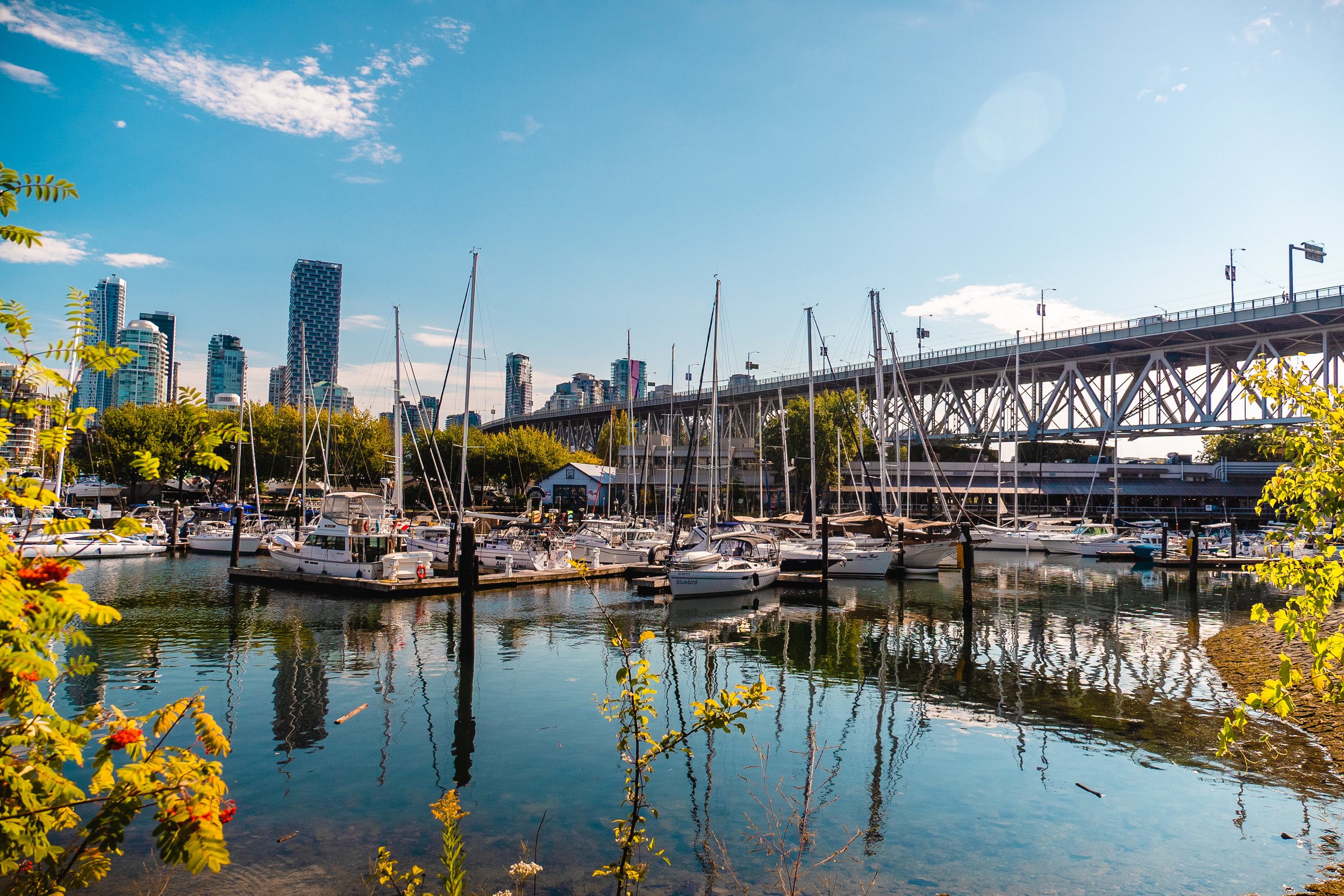
Vancouver
Community Based Water Monitoring Hub
The Vancouver Community-Based Water Monitoring Hub (“Vancouver Hub”), was established in 2018.
Operating out of False Creek, the Vancouver Hub engages the community in water quality monitoring, data-sharing, and stewardship of local waters.
-
Embraced by water, including the Salish Sea to the west, Burrard Inlet to the north, and the north arm of the Fraser River to the south, Vancouver is a coastal community defined by its proximity to the ocean, river, and mountains.
Swim Drink Fish Vancouver was founded and operates on the traditional, ancestral, and unceded homelands and waters of Xʷməθkʷəy̓ əm (Musqueam), Sḵwx̱wú7mesh (Squamish), and Səlil̓ ilw̓ ətaʔɬ (Tsleil-Waututh) First Nations. Since time immemorial, First Nations have been stewards of this land and water.
We pay respect to the elders and ancestors past, present and emerging whose histories, knowledge and cultural traditions have shaped the land and water of the greater Vancouver area and enrich practices around its stewardship.
In the spirit of reconciliation, we affirm our commitment to practice ongoing good relations with the land and water and with sovereign Indigenous nations that caretake them. Our work endeavors to support Indigenous rights and free access to swimmable, drinkable, and fishable waters.
-
Fraser Riverkeeper was founded in 2004 by the late Doug Chapman, a renowned environmental lawyer and seasoned prosecutor of environmental crime. Doug was joined by environmental lawyer Lauren Hornor in 2006, and when they officially relaunched Fraser Riverkeeper, they vowed that the organization would remain a vigilant protector and defender of the river and the waters of BC.
In December 2017, Fraser Riverkeeper officially joined Swim Drink Fish Canada to combine efforts in our shared mission to ensure swimmable, drinkable, fishable waters for all.
-
False Creek, known as sən̓ aʔqʷ (Sen̓ áḵw in Squamish) in Halkomelem, one of the traditional languages of the Coast Salish Peoples, translates to “the place inside the head of False Creek.” Since time immemorial, False Creek has been an important gathering place for the Xʷməθkʷəy̓ əm (Musqueam), Səlil̓ilw̓ ətaʔɬ (Tsleil-waututh), and Sḵwx̱wú7mesh (Squamish) Nations. The protected, shallow waters offered an optimal location for fishing and foraging amongst the intertidal zone. As such, a small seasonal fishing village, inhabited by the Sḵwx̱wú7mesh (Squamish) Nation, was once nestled between Vanier Park and Granville Island. In the 1880s, as settlers began to colonize the area, Indigenous inhabitants of the village were forced onto Kitsilano Indian Reserve No.6 or placed on a barge and relocated to North Vancouver.
The late 19th and early 20th centuries saw the rapid growth of Vancouver; gradually, False Creek’s tidal flats were heavily altered, polluted, and industrialized. By 1912, the region underwent one of the largest geographic alterations in Vancouver’s history - the draining of False Creek’s easternmost end. False Creek, which originally extended to present-day Clarke Drive, was filled in to what is now Main Street.
By the middle of the 20th century, the False Creek flats were the city’s industrial heartland. Pollution was rampant, and the inlet was crowded with port traffic. In anticipation of Expo ‘86, the city transformed the northern and eastern shores of False Creek into a colourful architectural playground. False Creek had been granted pedestrian access to English Bay via Seawall, Granville Island had been established as a mixed-income artist community, and large residential townhouses and condos had been constructed along the shoreline. Expo ‘86 is recognized as a significant turning point that rebranded Vancouver’s identity from an industrial port city to a vibrant and modern cultural centre.
Presently, False Creek has been transitioned from an industrial site into an accessible amenity. The shoreline is largely occupied by recreational users, both on land and in the water. Olympic Village, initially developed for the 2010 Olympic Winter Games, further remodeled the shoreline of False Creek into the public space we recognize today.
-
There are many ways you can support the efforts Swim Drink Fish is making to keep Vancouver’s waterways clean. Click the links below to get involved!
Explore the Vancouver Hub
-

Water Quality Issues in Vancouver
There are several water quality concerns in Vancouver that the hub monitors, educates the community about, and advocates to clean up.
-

Water Monitoring Sites
Explore where the Vancouver Hub regularly samples the water to monitor its quality and help water users make informed decisions prior to entering the waterway.
-

Water Monitoring Procedures
We use rigorous standards of water sampling, analyzing, and data sharing for scientific accuracy, and standardizations.
-

Special Projects
In addition to our water sampling activities, the Vancouver hub embarks on special partnerships and projects with the goal of healthy waterways around the city.
-

Water Quality Results
See the most recently available results for all the sites we monitor in Vancouver, including single samples results, the geomean and if it passed or failed.
Make a donation.
We rely on the continuous support of our donors to continue the important work we are doing around Vancouver. Make a donation today to help keep the waterways clean and accessible for everyone.
